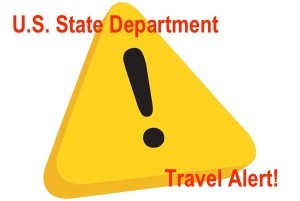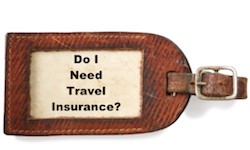Travel Alert: 2014 Hurricane and Typhoon Season
 The Department of State alerts U.S. citizens to the upcoming Hurricane and Typhoon Seasons in the Atlantic and Pacific Oceans, the Caribbean, and the Gulf of Mexico.
The Department of State alerts U.S. citizens to the upcoming Hurricane and Typhoon Seasons in the Atlantic and Pacific Oceans, the Caribbean, and the Gulf of Mexico.
Hurricane Season in the Atlantic begins June 1 and ends November 30. The Typhoon Season will last through the end of 2014, though most tropical cyclones typically develop between May and October. The National Oceanic and Atmospheric Administration (NOAA) recommends that those in hurricane- and typhoon-prone regions begin preparations for the upcoming seasons now. This Travel Alert expires on December 1, 2014.
The Atlantic Basin, including the Gulf of Mexico and the Carribean Sea: The National Oceanic and Atmospheric Administration’s (NOAA) Climate Prediction Center expects to see a near-normal or below-normal hurricane season this year with a 50 percent chance of a below-normal season, a 40 percent chance of a near-normal season, and only a 10 percent chance of an above-normal season. NOAA predicts a likely development of El Nino during the summer or early fall and a 70 percent chance of 8 to 13 named storms, of which three to six are predicted to strengthen to a hurricane (with top winds of 74 mph or higher). Of those, one to two are expected to become major hurricanes (with top winds of 111 mph or higher, ranking Category 3, 4, or 5 on the Saffir-Simpson Hurricane Wind Scale)). NOAA recommends that those in hurricane-prone regions begin preparations for the upcoming season now.
The Eastern Pacific: Hurricane season began May 15 and ends November 30. NOAA expects a near- or above-normal season, with a 50 percent chance of an above-normal season, a 40 percent chance of a near-normal season, and a 10 percent chance of a below normal season. NOAA predicts a 70 percent chance of 14 to 20 named storms, of which six to eleven are expected to become hurricane strength. Of those, three to six are expected to become major hurricanes (Category 3, 4, or 5 on the Saffir-Simpson Hurricane Wind Scale).
Western and Central Pacific: Typhoon season begins June 1 and ends November 30. NOAA’s Central Pacific Hurricane Center (CPHC) predicts a 40 percent chance of a near-normal season, a 40 percent chance of an above- normal season, and a 20 percent chance of a below-normal season. CPHC expects four to seven tropical cyclones to affect the central Pacific this season. For information on typhoon warnings, please consult the Joint Typhoon Warning Center in Honolulu, the National Weather Service’s Central Pacific Hurricane Center, and the Regional Specialized Meteorological Center (RSMC) Tokyo – Typhoon Center.
During and after some previous storms, U.S. citizens traveling abroad encountered dangerous and often uncomfortable conditions that lasted for several days while awaiting transportation back to the United States. In the past, many U.S. citizens were forced to delay travel (including return travel to the United States) due to infrastructure damage to airports and limited flight availability. Roads were also washed out or obstructed by debris, adversely affecting access to airports and land routes out of affected areas. Reports of looting and sporadic violence in the aftermath of natural disasters have occurred. Security personnel may not always be readily available to assist. In the event of a hurricane, travelers should be aware that they may not be able to depart the area for 24-48 hours or longer.
If you live in or travel to these areas during the hurricane or typhoon season, we recommend you obtain travel insurance to cover unexpected expenses during an emergency. If a situation requires an evacuation from an overseas location, the U.S. Department of State will work with commercial airlines to ensure that U.S. citizens may depart as safely and efficiently as possible. Commercial airlines are the Department’s primary source of transportation in an evacuation; other means of transport are utilized only as a last resort, are often more expensive, and will provide you with fewer destination options. U.S. law requires that any evacuation costs are your responsibility. For those in financial need, the U.S. Department of State has the authority to provide crisis evacuation and repatriation loans . For more information, please visit theEmergencies Abroad page on our website.
If you live in or are traveling to storm-prone regions, prepare for hurricanes and tropical storms by organizing a kit in a waterproof container that includes a supply of bottled water, non-perishable food items, a battery-powered or hand-crank radio, any medications taken regularly, and vital documents (especially your passport and other identification). Emergency shelters often provide only very basic resources and may have limited medical and food supplies. NOAA and the Federal Emergency Management Agency (FEMA) have additional tips on their websites.
Monitor local radio, local media, and the National Weather Service to be aware of weather developments. Minor tropical storms can develop into hurricanes very quickly, limiting the time available for a safe evacuation. Inform family and friends of your whereabouts and remain in close contact with your tour operator, hotel staff, transportation providers (airlines, cruise lines, etc.), and local officials for evacuation instructions during a weather emergency.
We strongly encourage U.S. citizens to enroll with the nearest U.S. embassy or consulate through the U.S.Department of State’s Smart Traveler Enrollment Program (STEP). By enrolling, you will receive the most recent security and safety updates during your trip. Enrollment also ensures that you can be reached during an emergency. While we will do our utmost to assist you in a crisis, be aware that local authorities bear primary responsibility for the welfare of people living or traveling in their jurisdictions.
Additional information on hurricanes and storm preparedness can be found on the Department’s“Hurricane Season – Know Before You Go” webpage. You can get updated information on travel to your destination from the Department of State by calling 1-888-407-4747 within the United States and Canada or, from outside the United States and Canada, 1-202-501-4444. We also encourage you to check theCountry Specific Information and the website of the U.S. embassy or consulate with consular responsibilities for the territory you will be visiting. Follow us on Twitter and become a fan of the Bureau of Consular Affairs’ page on Facebook as well.
If you enjoyed this article, sign up for our monthly newsletter to keep abreast of our best travel tips, on-location reviews, exclusive travel offers, group travel events, and much more.

 The Roaming Boomers
The Roaming Boomers



